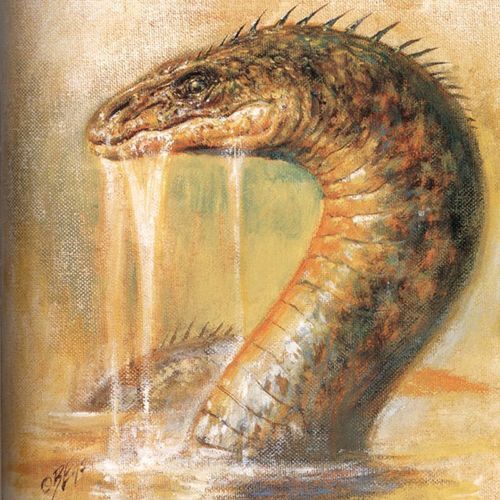

- #Draugen scandinavian mythical water creature skin
- #Draugen scandinavian mythical water creature full
Jörmungandrįor humans at least, there are few creatures more important than Jörmungandr. So now we have our classes of being, let's look at a few specific examples of Important Norse Creatures. They spend their days protecting the treasures in their graves and crushing people who attempt to rob them, or who wronged them in their lives. Perhaps most importantly, they can swim through solid rock, which perhaps explains how they exit their tombs. They can also increase their size at will and shape-shift into other creatures. What mythology is complete without some kind of zombie story? In Norse mythology these are the Draugr.ĭraugr are undead beings, with superhuman strength and the stench of decay. Read more: The Role of Women in the Viking Age Draugr They don't simply choose who gets in to Valhalla, they also choose who lives and dies in battle! It's certainly true that the Valkyries carried the slain to battle but their name – Choosers of the Slain – hints at their more sinister side. A good story but, as always, it's not quite that simple!

They're Odin's female helping spirits who are depicted as elegant maidens ferrying the slain to Valhalla. ValkyriesĪ stirring rendition of Wagner's Ride of the Valkyries has adorned many a film to good effect but what are the Valkyries? We'll get onto a few specific Jötunn later in this article but they include Hel – the Goddess/Giantess of the Underworld and Ymir who is a hermaphroditic entity that is the first being in the Norse creation myth. Often said to be at war with the Gods of the Æsir and Vanir, nevertheless, many of the Norse Gods themselves are borne of one or more Jötunn. It's perhaps better to consider them as ‘devourers' chaotic spirits of night and darkness and winter. Despite generally being translated as ‘Giants', they are usually the same size as humans.

The Jötnar (singular Jötunn) are an odd bunch, and difficult to define. The four Dwarfs Austri, Vestri, Nordri and Sudri – East, West, North and South – hold the sky aloft by its four corners, a testament to their incredible strength. This is disputed by many scholars, and the Dökkálfar could either be an attempt to introduce the ‘good vs evil’ concept or they may be Dwarfs under another name.ĭwarfs are highly knowledgeable, very wise, extremely skilled and magically powerful. Some sources distinguish Elves into two different groups – Dökkálfar and Ljósálfar – Dark Elves that are ‘blacker than pitch’ and Light Elves that are ‘lighter than the sun’. Read more: Norwegian Mythology & Folk Tales Elves were often portrayed as morally ambivalent. They were a very fluid race and did not subscribe to the normal gender roles of humans. On the whole the Elves kept themselves away from the affairs of humans, appearing only occasionally to either cause or cure illnesses, based on their whims.
#Draugen scandinavian mythical water creature skin
Said to inhabit the realm of Alfheim, under the rule of the God Freyr, the Elves were tall, slim demi-gods with pale skin and hair, who were more beautiful than the sun. Here, we take a look at the best of the best – from races such as elves to individual creatures such as the mighty Kraken – so for everything you need to know about the fantastic beasts, we’ve got you covered! Elves
#Draugen scandinavian mythical water creature full
The world of fantasy is packed full of amazing mythical creatures such as Elves, Dwarfs and Giants.Įverywhere, from Lord of the Rings to The Elder Scrolls games, these creatures are deeply woven into our cultural fabric.īut what many people don’t realise is that most of these creatures take their cue directly from Norse mythology. From Odin’s mighty horse to a world-circling serpent, Norse Mythology has a cacophony of crazy creatures!


 0 kommentar(er)
0 kommentar(er)
